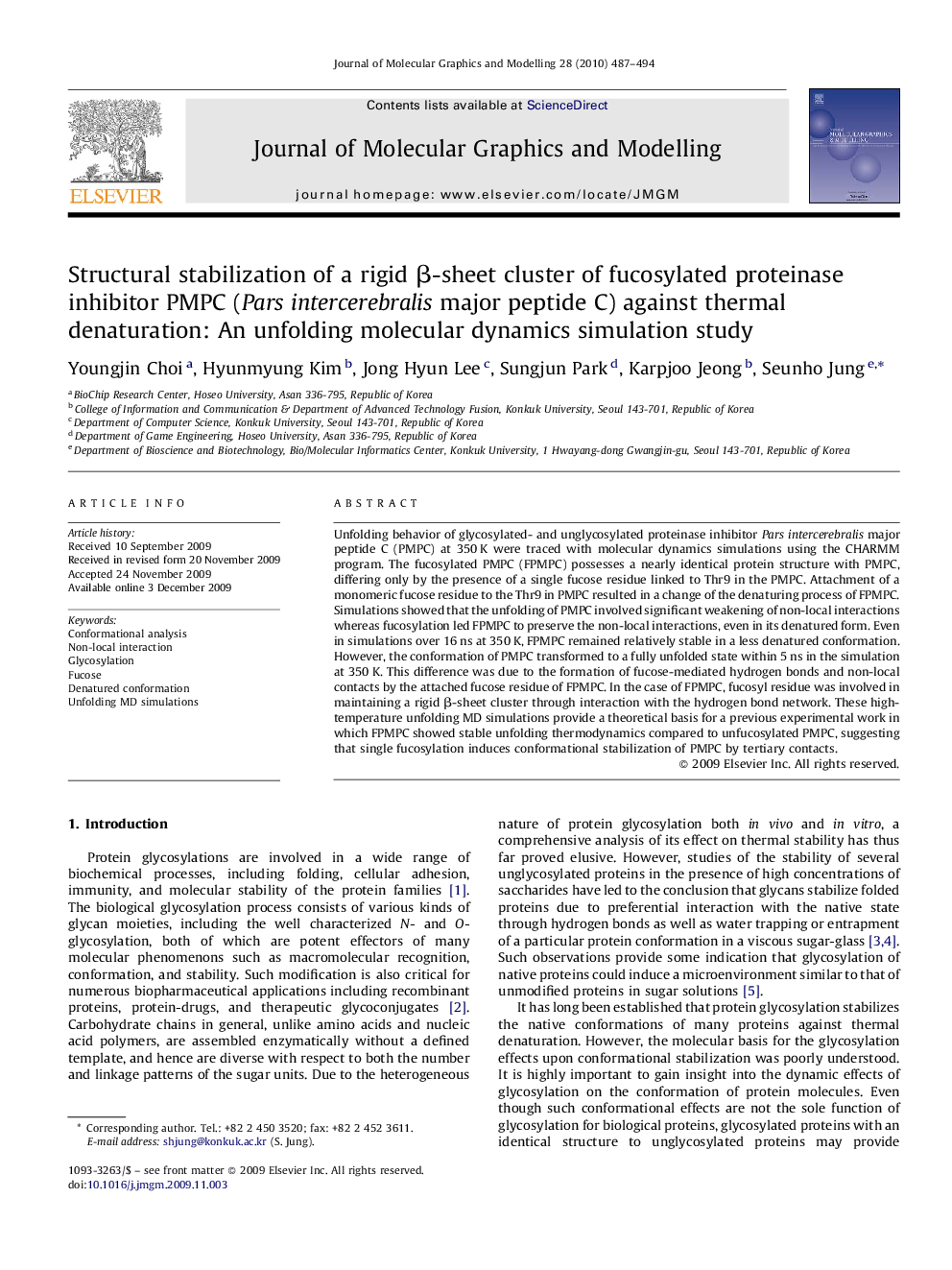| کد مقاله | کد نشریه | سال انتشار | مقاله انگلیسی | نسخه تمام متن |
|---|---|---|---|---|
| 444523 | 693001 | 2010 | 8 صفحه PDF | دانلود رایگان |

Unfolding behavior of glycosylated- and unglycosylated proteinase inhibitor Pars intercerebralis major peptide C (PMPC) at 350 K were traced with molecular dynamics simulations using the CHARMM program. The fucosylated PMPC (FPMPC) possesses a nearly identical protein structure with PMPC, differing only by the presence of a single fucose residue linked to Thr9 in the PMPC. Attachment of a monomeric fucose residue to the Thr9 in PMPC resulted in a change of the denaturing process of FPMPC. Simulations showed that the unfolding of PMPC involved significant weakening of non-local interactions whereas fucosylation led FPMPC to preserve the non-local interactions, even in its denatured form. Even in simulations over 16 ns at 350 K, FPMPC remained relatively stable in a less denatured conformation. However, the conformation of PMPC transformed to a fully unfolded state within 5 ns in the simulation at 350 K. This difference was due to the formation of fucose-mediated hydrogen bonds and non-local contacts by the attached fucose residue of FPMPC. In the case of FPMPC, fucosyl residue was involved in maintaining a rigid β-sheet cluster through interaction with the hydrogen bond network. These high-temperature unfolding MD simulations provide a theoretical basis for a previous experimental work in which FPMPC showed stable unfolding thermodynamics compared to unfucosylated PMPC, suggesting that single fucosylation induces conformational stabilization of PMPC by tertiary contacts.
Journal: Journal of Molecular Graphics and Modelling - Volume 28, Issue 6, 26 February 2010, Pages 487–494